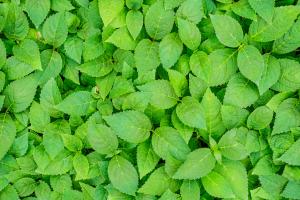Can a Tree Fungus Spread to Vegetable Plants?
Fungus is a common problem that affects many species of plants, including trees and vegetables. While some diseases are specific to certain plants, there are cases in which a fungus that grows on a tree can spread to nearby vegetable plants. In this article, we will explore the factors that can influence the transmission of fungus from trees to vegetables and what you can do to prevent the spread of disease.
The Role of Spores in Fungal Transmission
Fungi reproduce through spores, which are small, lightweight structures that can travel through the air. Trees that are infected with fungal diseases produce these spores, which can then be carried by the wind to nearby plants. Once the spores come in contact with a susceptible plant, they can thrive and cause infection. This means that even if your vegetable plants are not growing near a tree, there is still a chance that they can be infected by spores that have been carried to their location.
The Importance of Planting Distance
One of the most effective ways to prevent the spread of fungus from trees to vegetables is to plant them at a distance from each other. Ideally, there should be at least 20 feet of space between the two types of plants. This distance will make it more difficult for spores to travel from the tree to the vegetables, reducing the risk of infection. Additionally, you should consider the direction of the prevailing wind when planting your vegetables. If the wind tends to blow in the direction of the tree, you will need to ensure a greater distance between the two types of plants.
The Importance of Healthy Trees
Another important factor that can influence the spread of fungus from trees to vegetables is the health of the tree itself. If a tree is diseased, it is more likely to produce spores and spread the infection to nearby plants. This is why it is essential to keep your trees healthy by pruning them regularly, removing any dead or diseased branches, and using fungicides as needed. By maintaining healthy trees, you can reduce the risk of fungal transmission to your vegetable plants.
Controlling Fungal Infections
If you suspect that your vegetable plants have been infected with fungus, it is important to take action quickly to prevent the infection from spreading further. There are several steps you can take to control fungal infections in your plants, including removing infected leaves and stems, pruning the affected areas, and using fungicides. Additionally, you can improve the growing conditions for your plants by ensuring adequate sunlight, soil drainage, and air circulation.
Conclusion
While it is possible for tree fungus to spread to vegetable plants, there are several steps you can take to prevent this from happening. By planting at a distance, maintaining healthy trees, and controlling fungal infections, you can reduce the risk of transmission and keep your plants healthy. If you are unsure about the health of your trees, consult with a professional arborist or your local extension office for guidance on disease prevention and treatment.

 how many times do yo...
how many times do yo... how many planted tre...
how many planted tre... how many pine trees ...
how many pine trees ... how many pecan trees...
how many pecan trees... how many plants comp...
how many plants comp... how many plants can ...
how many plants can ... how many plants and ...
how many plants and ... how many pepper plan...
how many pepper plan...































